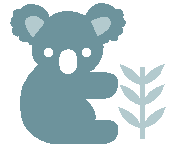FM.J.113 SORTS OBJECTS ACCORDING TO CATEGORY
In the Receptive Language Sequences the child learns to select objects on the basis of category to which they belong. In this item, the child uses his concept of categories, or groups of objects that relate to each other, in an independent sorting activity.
This item serves 2 purposes – it strengthens the child’s ability to place things in categories, and it extends his sorting skills.
Before assessing and teaching this item, refer to RL.C.71 to RL.C.74. If your child has not scored plus on these items, teach them first, and then use this sorting item as an extension activity.
How to Assess
Materials: 3 dishes and 3 sets of objects, with 5 in each set. Each set should represent a distinct category, such as toys, food, clothes, furniture or animals. For instance, you could have 5 small plastic food items, 5 pieces of dolls’ clothing and 5 pieces of dolls’ house furniture.
Method: Place the dishes on the table with the objects mixed together in a pile to one side. Demonstrate sorting the objects, saying ‘Look, I’m putting all the clothes together’, and so on. Remove the objects from the dishes, and ask your child to sort them.
Score plus if your child sorts all the objects correctly without any help.
How to Teach
If you have not already done so, begin teaching as in RL.C.71 to RL.C.74.
Once your child can point to all members of a group when you ask him to, present the sorting activity described below. Move away and allow your child to complete the activity independently, as in other sorting items in this sequence.
Playtime and Round-the-house Activities
Perhaps your child could sort the clothes that have come in off the line, or help you to sort the shopping into fruit, vegetables, cans and so on. Encourage him to sort out his belongings at tidying-up time.
Remembering and Extending
Refer again to the notes on RL.C.71 to RL.C.74.
Other categories that you could talk about and include in sorting activities are ‘vehicles’ and ‘tools’ and ‘cutlery’. Many objects are categorised by their use or function, such as ‘things we wash up with’ and ‘things we sew with’ and ‘things we cook in’. This notion of function is explored more fully in the next item in this sequence.
